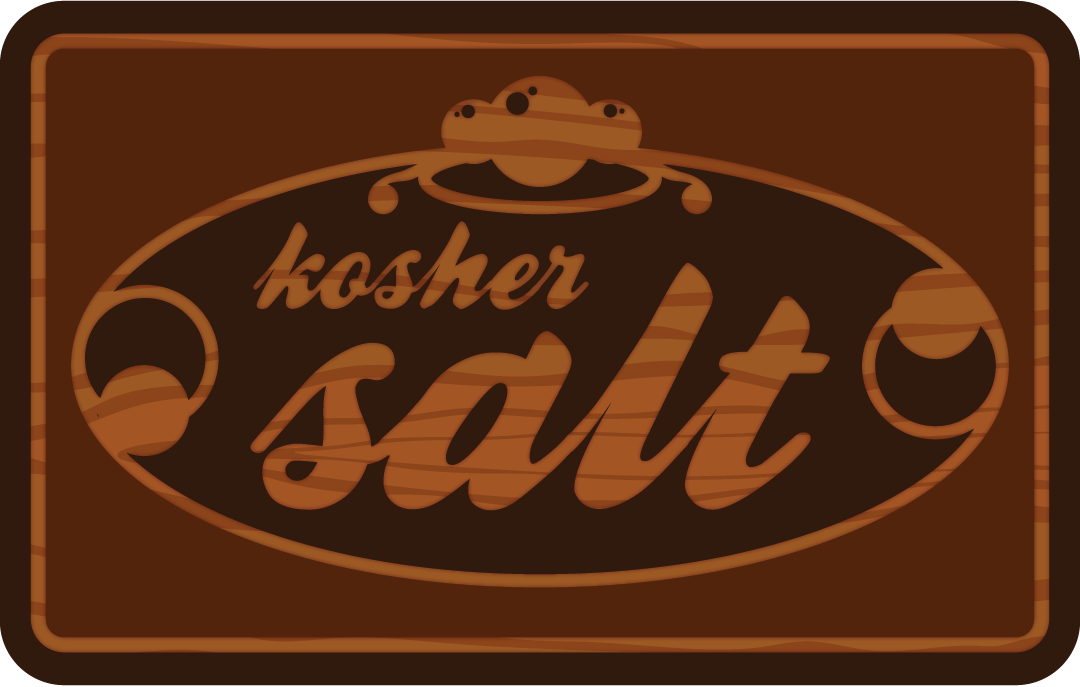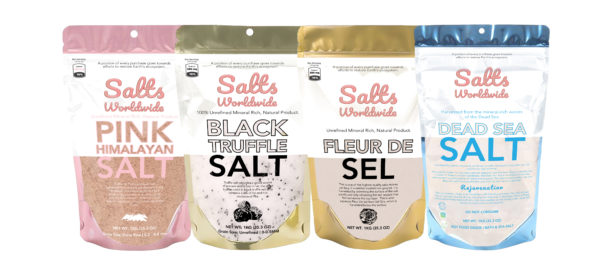
A Himalayan pink sea salt is a healthy and tasty addition to your food, but is it really worth the cost? We take a look at the benefits of this salt and where to buy it. You can choose between fine, medium, or coarse grain, depending on the texture of your food. You can find this salt in coarse, fine, and extra fine grades, too. It also has plenty of health benefits, including calcium, magnesium, iron, and copper.
Ingredients
The pink color of Himalayan pink salt has made it a popular alternative to table sea salt. It is mined near the Himalaya mountains in South Asia. While it does contain higher amounts of magnesium than ordinary table salt, these levels are insufficient to make a significant difference. The other important minerals and elements in Himalayan salt are comparable to those found in ordinary sea salt. You can safely substitute Himalayan salt for table sea salt in your favorite recipes.
Himalayan pink salt contains many minerals, trace elements, and iron. It is harvested by hand in the Khewra salt mine in Pakistan. It is minimally processed and has a number of dietary uses. Using this salt in your cooking is a great way to reap the benefits of its natural mineral content and enhance the taste of your dishes. There are many other benefits of pink Himalayan salt, such as its anti-inflammatory and antioxidant properties.
Besides helping you get rid of viruses and bacteria, Himalayan pink salt also contains 84 trace minerals. Its 98 percent sodium chloride content makes it an ideal choice for people with respiratory problems or a poor immune system. The trace minerals, however, make up less than two percent of the total salt content, so it is unlikely to provide significant health benefits. However, they are beneficial in some cases, and should be considered as a supplement to a diet rich in saturated fats.
In terms of health, pink Himalayan salt is generally safe to consume in quantities up to four teaspoons a day. It contains about 6% of your recommended daily iron intake. However, the salt content of pink Himalayan pink salt may differ between brands. It depends on the crystal size of the salt, so check your labels and read the label. Make sure to choose a high-quality brand if you want to get the maximum benefits from this salt.
You should avoid table salt if you want to get the most out of the benefits of Himalayan salt. It is not only used in cooking but can also be used to preserve foods. Pink salt blocks are also used to serve as cutting boards, cutting surfaces, and serving trays. Some people use Himalayan salt as bath salts or even to make their own lamps. So, make sure to try Himalayan salt before buying it.
Health benefits
In addition to having numerous health benefits, Himalayan pink salt is also a safe and effective alternative to table salt. It contains 84 trace minerals, as opposed to a mere 98 percent sodium chloride. While this may not seem like much, it has the ability to improve eye health. Unlike table salt, which can dry out your eyes, pink Himalayan salt is a natural source of iodine, a vital trace mineral that promotes eye health.
While many consumers are drawn to its bright pink color, there are still no scientific studies that directly compare the effects of Himalayan pink salt to table sodium. While this salt may taste and smell delicious, it is important to monitor your consumption. Excessive consumption may result in dehydration, heart disease, and other health problems. For this reason, it is always a good idea to consult a health professional before changing your salt habits.
One of the most effective ways to take advantage of the health benefits of Himalayan pink salt is to soak in it. To do this, simply pour a cup of Himalayan pink salt in 97-degree water. Soak for at least 20 minutes. While you don’t need to take a bath or shower every day, soaking in a brine bath is an excellent way to get all the benefits of pink salt.
Its unrefined makeup makes Himalayan pink salt a natural choice for seasoning and cooking. It doesn’t contain any additives or artificial ingredients, like magnesium carbonate. Most table salt is heavily refined and mixed with anti-caking chemicals to prevent clumping. It’s a great choice for people who want to eliminate additives while still tasting great. If you’re looking for a natural alternative to table salt, consider Himalayan pink salt.
As an anti-oxidant, Himalayan pink salt has a wide range of health benefits. It is an excellent detoxifier, removing toxins from the body and balancing pH levels. In addition to these benefits, it also relieves indigestion, improves digestion and helps reduce sugar cravings. It also aids the immune system. This means a better mood and a better night’s sleep!
Price
Himalayan pink salt is a luxury and more expensive version of table sea salt, but its benefits far outweigh the cost. This salt is extremely pure, is unrefined, and free of artificial additives. While table salt is heavily refined, it is usually mixed with an anti-caking agent to prevent it from clumping. This makes Himalayan salt an excellent choice for seasoning and cooking.
Himalayan pink salt is a natural rock salt found deep in the Himalayan Mountains. It is mined from ancient sea beds that crystallized long before pollution became a problem. Its rich pink color is attributed to a variety of minerals and trace elements. The mineral impurities give Himalayan pink salt its distinct, characteristic pink hue. Because it contains so many beneficial minerals, it is an excellent alternative for cooking and baking.
Besides its health benefits, Himalayan pink salt can be used in a variety of ways, including cooking and bathing. Its purity makes it ideal for a variety of uses, including removing artificial signals and improving sleep. In addition to sodium chloride, Himalayan pink salt contains 84 trace minerals. However, trace minerals only make up 2 percent of the salt, and they do not offer significant health benefits.
Himalayan pink salt is highly beneficial for your body. Apart from lowering cholesterol levels and improving circulation, it has been shown to improve your skin’s condition and reduce your risk of various ailments. It can also help you lose weight, control blood pressure, and reduce inflammation. It is available in many varieties and is priced accordingly. So, the next time you’re thinking about buying Himalayan salt, take a moment to compare prices. You’ll be glad you did.
You can find pink Himalayan salt on various online stores. They will provide you with reviews from customers. You can also buy Himalayan salt in your local market. Its prices range from $10 to $100, and you can find the perfect one for your kitchen. There are even some websites that sell pink salt in bulk. You can even use it as a decorative item. And it’s worth mentioning that pink Himalayan salt has a variety of uses. It’s not only used in cooking, but it’s also used in cosmetics and as a beauty aid.
Region of origin
Known worldwide for its therapeutic properties, Himalayan pink salt is used in many applications. In addition to imparting a deep, rich flavor to food, it has numerous medical and beauty benefits. This article will explore some of the most common uses of Himalayan pink salt. Listed below are just some of the benefits that this salt offers. Read on to discover more about this amazing product. To get started, learn more about the region of origin of Himalayan pink salt.
Pakistan is the region of origin of most of the Himalayan pink salt consumed in the world. As a result, Pakistan should focus on increasing its exports to the West. The country has been ruled by various empires and governments, many of which have exerted influence over the salt reserves. The country has a strong desire to increase its share of these lucrative exports and boost its national economy. And if that’s not enough, it can always import other varieties of salt from other countries.
The salt deposits were covered by lava, which cooled and left behind a thin layer of salt. The salt was then blanketed by an ice age, which subsequently absorbed minerals and remained pure. The region of origin of Himalayan pink salt comes from the mountains of Pakistan, but it’s not necessarily from Mount Everest. The vast majority of pink salt found on grocery shelves is harvested from a mine in Pakistan, the Khewra Salt Mine, which is in the province of Punjab.
Initially a humble condiment, the Himalayan pink salt has exploded into the health and wellness world. Today, it’s used in beauty products, spa facilities, and home decor. Its rosy pink color has fueled the popularity of the pink salt, a product that has the potential to revolutionize the way we consume salt. There are no shortage of products available today for consumers to choose from.
Although the mineral content of Himalayan pink salt may vary, the region of origin has a direct impact on its health benefits. In June 2018, a team of scientists from the Environmental Analysis Laboratory of Southern Cross University conducted a mass spectrometry scan on samples purchased from retail stores in Australia. The salt was found to contain trace amounts of several non-nutritive minerals. No silver or arsenic was detected in the samples.


